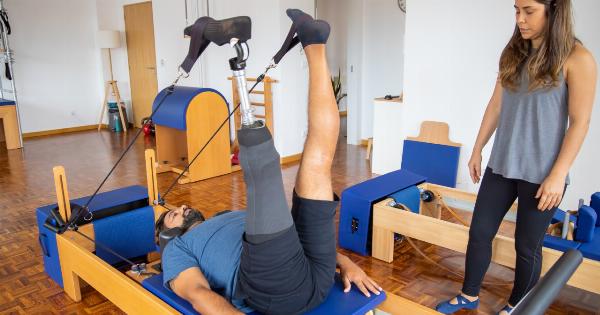When it comes to fitness, most people focus on building strong muscles and improving their endurance. However, one crucial component of overall health that is often overlooked is cardiovascular fitness.
A strong and healthy heart is essential for maintaining optimal overall health. While activities like running and cycling are commonly associated with improving heart health, there is another effective approach that can be incorporated into your fitness routine: strengthening your heart with weights.
In this article, we will explore the safe and effective ways to strengthen your heart using weights.
The Importance of Cardiovascular Fitness
Cardiovascular fitness refers to the ability of the heart, lungs, and blood vessels to efficiently pump oxygen-rich blood to the muscles during physical activity.
It plays a vital role in maintaining overall health and reducing the risk of various diseases such as heart disease, stroke, and high blood pressure.
A strong cardiovascular system also enhances athletic performance, improves stamina, and increases energy levels. Additionally, regular cardiovascular exercise can aid in weight management, improve sleep quality, boost mood, and reduce stress levels.
Traditional Cardio vs. Weight-Based Cardio
When we think of cardiovascular exercises, activities like running, swimming, and cycling typically come to mind. These exercises primarily focus on elevating the heart rate and increasing aerobic capacity.
However, weight-based exercises can also be an effective way to engage the cardiovascular system while simultaneously building strength and muscle.
Traditional cardiovascular exercises provide numerous benefits, but they mainly focus on endurance and burning calories.
In contrast, weight-based cardio exercises combine the benefits of cardiovascular training with strength training, resulting in a well-rounded approach to fitness.
The Benefits of Strengthening Your Heart with Weights
Many people are hesitant to incorporate weights into their cardiovascular routine, fearing that it may put excessive strain on their heart. However, when performed correctly and safely, weight-based cardio exercises can provide several benefits:.
1. Increased Heart Strength
Performing weight-based exercises forces the heart to work harder to pump blood throughout the body.
Over time, this increased workload strengthens the heart muscles, making it more efficient at distributing oxygen to the body’s tissues and organs.
2. Improved Muscle Strength and Endurance
Weight-based cardio exercises engage multiple muscle groups simultaneously. This helps improve muscle strength and endurance, allowing you to perform activities with less effort and reducing the risk of injury during everyday activities.
3. Enhanced Metabolism
Strengthening your heart through weight-based exercises increases your overall muscle mass. As muscles are more metabolically active than fat, this leads to an increased metabolic rate.
A higher metabolism translates into a greater number of calories burned even at rest, making weight management more manageable.
4. Reduced Risk of Osteoporosis
Weight-bearing exercises, such as weightlifting, increase bone density and help prevent the development of osteoporosis.
Regular weight-based cardio exercises can help build and maintain strong bones, reducing the risk of fractures and age-related bone conditions.
Choosing the Right Weights
When incorporating weights into your cardiovascular routine, it is essential to choose the appropriate level of resistance.
The weights should be challenging enough to engage your muscles and elevate your heart rate, but not so heavy that they compromise your form or cause injury.
If you are new to weight-based cardio exercises, it is advisable to start with lighter weights and gradually increase the resistance as your strength and stamina improve.
Consulting with a certified fitness professional can help you determine the optimal weight for your fitness level and goals.
Safe and Effective Weight-Based Cardio Exercises
Now that we understand the benefits of incorporating weights into our cardiovascular routine let’s explore some safe and effective weight-based cardio exercises:.
1. Weighted Squats
Stand with your feet shoulder-width apart, holding a dumbbell in each hand at your sides. Lower your body by bending your knees and hips, pushing your glutes back as if sitting in a chair. Keep your chest lifted and your weight on your heels.
Engage your core and powerfully drive through your heels to return to the starting position. Repeat for the desired number of repetitions.
2. Dumbbell Lunges
Hold a dumbbell in each hand, with your arms hanging at your sides. Step forward with your right foot, bending both knees to create two 90-degree angles. Keep your weight on your front heel as you push back up to the starting position.
Alternate legs and repeat for the desired number of repetitions.
3. Kettlebell Swings
Stand with your feet shoulder-width apart, holding a kettlebell with both hands in front of your body. Hinge forward at the hips with a slight bend in your knees, allowing the kettlebell to swing back between your legs.
With a powerful hip thrust, swing the kettlebell up to chest height, maintaining a straight back and engaged core. Allow it to swing back down between your legs, controlling the movement with your hips and legs. Repeat for the desired number of repetitions.
4. Medicine Ball Slam
Hold a medicine ball with both hands, standing with your feet hip-width apart. Raise the ball overhead, fully extending your body. Forcefully slam the ball onto the ground, engaging your core and ensuring a good grip on the ball.
Catch the rebound, and immediately repeat the movement for the desired number of repetitions.
5. Barbell Clean and Press
Stand with your feet hip-width apart, holding a barbell in front of your thighs with an overhand grip. Squat down, keeping your back straight and your core engaged.
As you stand up, simultaneously pull the barbell up and catch it on your shoulders, with your elbows pointing forward. Press the barbell overhead until your arms are straight, and then lower it back down to the starting position. Repeat for the desired number of repetitions.
6. Seated Cable Row
Sit on a cable row machine with your feet planted on the footrests. Hold the handles with an overhand grip, keeping your arms fully extended in front of you.
Engage your core and pull the handles toward your midsection, squeezing your shoulder blades together. Slowly release the tension and return to the starting position. Repeat for the desired number of repetitions.
7. Battle Rope Waves
Stand with your feet shoulder-width apart, holding one end of a battle rope in each hand. Bend your knees slightly and engage your core. Begin creating waves in the rope by lifting and lowering each arm independently.
Maintain an even and consistent wave pattern for the desired amount of time or repetitions.
8. Step-ups with Dumbbells
Hold a dumbbell in each hand, standing in front of a box or step. Step your right foot onto the box, driving through your heel. Bring your left foot up to meet your right foot and step back down with your left foot, then your right foot.
Repeat the movement, leading with the opposite foot. Alternate legs and repeat for the desired number of repetitions.
9. Jump Rope with Ankle Weights
Put on ankle weights and grab a jump rope. Jump rope with a normal cadence, focusing on maintaining proper form and rhythm. The added ankle weights will increase resistance and engage your leg muscles further, benefiting your cardiovascular system.
Start with shorter intervals and gradually increase the duration as your fitness improves.
10. Farmer’s Walk
Pick up a dumbbell or kettlebell in each hand, using an appropriate weight. Stand tall with your shoulders back and engage your core. Walk forward, focusing on maintaining an upright posture and not allowing your shoulders to slump.
Take small, controlled steps for the desired distance or time.
Safety Tips
While weight-based cardio exercises can be safe and effective, it is crucial to prioritize safety. Here are some essential safety tips to keep in mind:.
1. Warm Up Properly
Prior to starting any exercise program, it is essential to warm up your body by performing dynamic stretches and light cardiovascular exercises. This will increase blood flow to the muscles and prepare your body for the workout ahead.
2. Use Proper Form
Correct form is crucial for injury prevention and optimal results. If you are unsure about the proper form for a particular exercise, consult with a qualified fitness professional or watch instructional videos to learn the correct technique.
3. Start with Light Weights
As mentioned earlier, it is essential to start with lighter weights and gradually increase the resistance as your strength improves. This will allow your body to adapt and help prevent injury.
4. Listen to Your Body
Pay attention to how your body feels during exercise. If something feels painful or uncomfortable, stop the exercise and consult with a healthcare professional or certified trainer. Pushing through pain can lead to further injury.
5. Stay Hydrated
Proper hydration is essential for optimal performance and recovery. Drink water before, during, and after your workouts to replenish lost fluids.
Conclusion
With the right approach and safety precautions, strengthening your heart with weights can be a safe and effective way to improve cardiovascular fitness and overall health.
By incorporating weight-based cardio exercises into your fitness routine, you can reap the benefits of increased heart strength, improved muscle endurance, enhanced metabolism, and reduced risk of osteoporosis. Remember to focus on proper form, gradually increase resistance, and listen to your body to ensure a safe and effective workout.





























